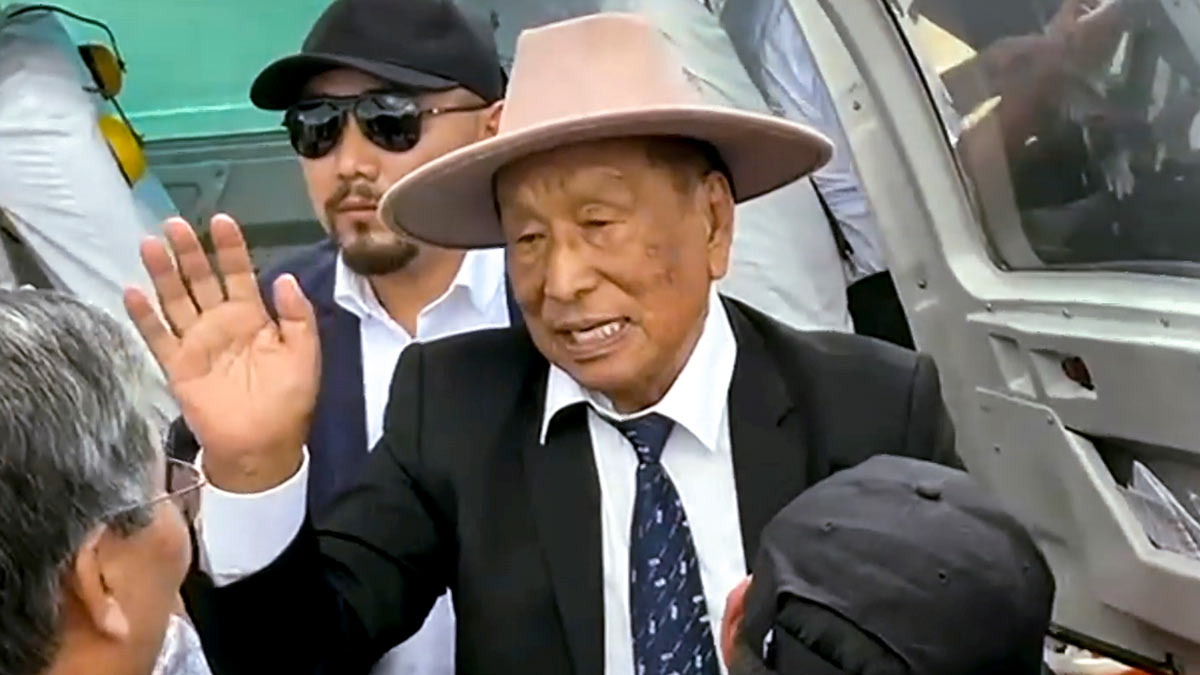As Thuingaleng Muivah comes home, all eyes on the Naga leader to give roadmap to peace

NSCN(IM) general secretary Thuingaleng Muivah, 91, spent a large part of his life between New Delhi and camp Hebron in Dimapur, performing the role of the chief political negotiator of the outfit as well as acting as glue to keep the Naga groups united back home. His advanced age took him away from New Delhi to camp Hebron in the post pandemic period, where he started spending more time in the vast swathes of land where armed cadres reside alongside the parallel government of the largest insurgent group; but now it is homecoming as he visits his village Somdal in Ukhrul district off Manipur on Wednesday—his first visit in over five decades.
For the last surviving founding leader of the NSCN, it is an emotional moment as the Tangkhul Naga is among his own people in his home ground, after spending time in different places and foreign lands, sustaining the Naga movement, in the hope for a political settlement to integrate all Naga inhabited regions for a greater Nagalim. His desire to visit his village was well known among the different Naga organisations, but resistance from the then Congress government in Manipur in 2010 did not allow him to set foot there for fear of spiralling tensions in the region.
Muivah’s challenges have been multifold. He has attempted to sustain the Naga struggle for sovereignty, keeping internal and external forces at bay to avoid factionalism, and finding a lasting solution to the decades-long insurgency. In 2015, Muivah went on to become the chief architect of the framework agreement signed between the NSCN(IM) and the government, hoping to finalise a Naga peace accord. On the table has been their charter of demands and the basic premise of an enduring, inclusive and peaceful co-existence.
However, peace has been elusive, and Muivah’s challenges have only grown over time. Not only has the Naga movement spilled blood over decades, the threat from the NSCN(IM) became more challenging for security forces as various cadres moved to the India-Myanmar border. The crackdown of central agencies on the extortion and smuggling activities of the outfit also put pressure on Muivah to rein in cadres to sustain the dialogue with the government’s interlocutors. What makes Muivah’s role increasingly important is the fact that the Naga insurgency is at a crossroads today with the government making it clear that any solution or peace accord will be within the framework of the Indian Constitution and demands like a separate flag and Constitution cannot be accepted.
However, there is concern over Muivah’s failing health bringing uncertainty to the final peace accord, as the next crop of leaders may not carry the heft to carry forward the peace talks in a similar manner. There is also increased pressure on the outfit after demands have been raised by the Naga National Political Groups to ink a peace deal with the government.
Struggling to keep its flock together, the NSCN(IM) has been making desperate attempts to consolidate its lost strength in the erstwhile base in Myanmar with the help of some of its cadres, who slipped into Yunnan province of China in 2019. While the growing isolation of the outfit within Nagaland might put pressure to find a middle ground in its talks with the government, all eyes are on Muivah to bring an end to the armed struggle in his lifetime. Clearly, his visit to his village isn’t just an emotional moment. It is also a message by the government to allow the now aged Muivah a chance to hand down a roadmap to peace to the younger generation.
“The village holds immense significance for members of the indigenous tribes,” said a government official. “Muivah’s homecoming may possibly be part of a last attempt of giving him closure.”
But for the outfit, which no longer holds sway in these parts outside Nagaland, it may be a tough journey back to Hebron after Muivah.
India